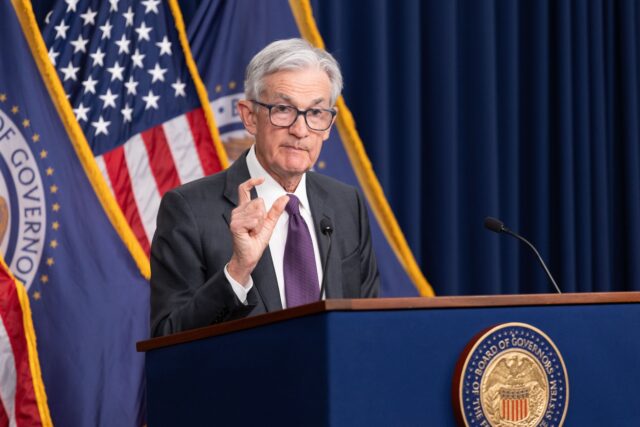Inflation continued its steady rise in February, the latest indication that the Federal Reserve’s efforts to restore price stability have faltered.
The personal consumption expenditures (PCE) price index rose 0.3 percent for the month in February, matching the January pace. If prices rose at that pace over the next twelve months, inflation would rise to four percent. Compared with a year ago, the PCE price index is up 2.5 percent.
The Fed uses the PCE price index for its official target of two percent inflation. It also uses the index in the economic projections of Fed officials that are released at every other meeting of the Fed’s monetary policy committee.
The core PCE price index, which strips out volatile food and energy prices, rose 0.4 percent from the previous month. That was faster than expected, indicating analysts underestimated inflationary pressures in the economy. The core index has now increased every month since November — just after the Federal Reserve began cutting interest rates in September.
If February’s rate of inflation held over the coming 12 months, the inflation rate would be 4.5 percent. That’s the highest one-month annualized rate since January 2024. Compared with a year ago, core PCE prices were up 2.8 percent in February, up from 2.7 percent in January, marking the highest rate since early 2021.
The persistence of inflation above the Fed’s 2 percent target underscores that price pressures are building before the newly announced tariffs on imports have taken effect.
By subscribing, you agree to our terms of use & privacy policy. You will receive email marketing messages from Breitbart News Network to the email you provide. You may unsubscribe at any time.
The February report also showed that super-core inflation — which measures the price of services excluding energy and housing — rose 0.2 percent from January and is up 3.3 percent year-over-year. The super-core index, which some Fed officials have said they watch as perhaps a better gauge of underlying inflation trends, has risen at a 4.5 percent annualized rate over the past three months.
The continued rise in core PCE inflation indicates that broader economic conditions, including strong wage growth and resilient consumer spending, are contributing to the upward pressure on prices. The fact that inflation has accelerated since the Federal Reserve cut its policy rate by 75 basis points in September and then another 25 points at each of the meetings in November and December suggests that monetary policy may be playing a role in the sustained price increases.
Some analysts look to two alternate measures of PCE inflation that eliminate outlier price changes in order to determine underlying inflation. The Dallas Fed calculates trimmed mean inflation, which excludes the biggest increases and decreases. This rose an an annual rate of three percent in February, an increase from January’s 2.5 percent. The Cleveland Fed’s measure of median inflation rose 0.3 percent for the third straight month, highlighting the lack of progress against high inflation.
Analysts have noted that the consistent rise in core and super-core PCE inflation since November may indicate a policy miscalculation. With inflation running well above target, some economists have questioned whether the Fed’s decision to cut rates was premature. The data suggests that price pressures are not merely the result of anticipated tariffs but are part of a broader inflationary trend that began months earlier.
As the Fed approaches its next policy meetings, the persistence of core and super-core inflation will likely weigh heavily on discussions about whether further rate cuts are warranted. If inflation continues to climb, it will be increasingly difficult to attribute rising prices to tariffs alone, rather than to broader economic forces.



COMMENTS
Please let us know if you're having issues with commenting.